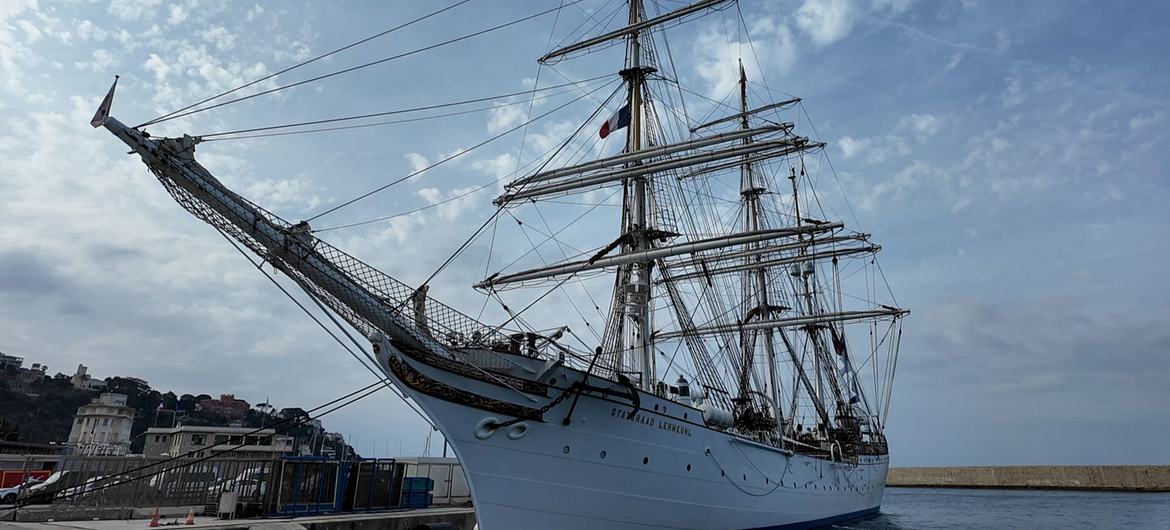
Equipped with satellite-linked instruments and backed by the European Space Agency (ESA), the expedition's goal was clear: to deepen understanding of the ocean's role in climate resilience and inspire the next generation of ocean ambassadors.
A historic vessel, reimagined
Moored at Port Lympia, the three-masted Statsraad Lehmkuhl—built in 1914 and refitted last year—has shed its past as a naval training ship and embraced a new life as a state-of-the-art scientific platform. This voyage marks the second One Ocean Expedition, launched in April from Bergen, Norway, and set to circumnavigate the Atlantic before returning a year later.
It forms part of the UN Decade of Ocean Science for Sustainable Development and carries a mission that blends science, sustainability, and storytelling.
Space and sea in sync
Led by ESA ocean scientist Craig Donlon, the students onboard use real-time satellite data to guide their daily research. "We get the data about three and a half hours after it's processed, and then we go to the captain and say: ‘We've spotted something—can we divert course?'" Donlon told UN News with a grin.
From detecting underwater currents to mapping biological patterns, their instruments include acoustic profilers, hydrophones, and CTD sensors. These tools help track everything from soundscapes to microplastics—turning the vessel into a floating observatory.
The students, drawn from 28 countries, have already logged over 15 terabytes of ocean data. "They're working eight-hour shifts on deck, then using their downtime to analyse and model the data," Donlon said. "It's exhausting, but transformative."
From sea to space—and back again
Among the ship's crew is ESA astronaut-in-training Pablo Álvarez, expected to join the International Space Station before the end of the decade. Before heading into orbit, he's diving deep into ocean remote sensing—analysing ‘sun glitter' patterns in satellite images to better understand wind, wave, and current interactions.
"Ocean science and Earth observation both push the frontiers of human knowledge," Álvarez said. "We are born to explore."
Tracking the invisible: microplastics in motion
German student Lena Schaffeld is focused on microplastic pollution—tiny particles often invisible to the naked eye. As the ship moved from Arctic waters through the Atlantic and into the Mediterranean, her samples revealed a rise in visible plastic debris.
"The real analysis will happen once we return and examine the filtered samples under a microscope," she explained. She hopes to eventually match microplastic concentrations with satellite data and ocean current models to identify potential sources and pathways.
"Plastic moves with the water. If we can model that, we can better understand where it comes from and where it goes," she said.
Changing tides in ocean science
Schaffeld was especially proud of the female-majority cohort onboard. "We need more women in science, especially in oceanography," she said. "It's empowering to be part of that change."
The diversity of students and the collaborative nature of the voyage reflect a broader shift in how science is taught and conducted: hands-on, inclusive, and guided by urgent environmental realities.
‘There can be no green without blue'
As UNOC3 progresses, Donlon believes the ship's mission is a microcosm of what's needed globally: real data, shared knowledge, and a united front.
"The ocean is beautiful, but fragile. It's not a dumping ground," he said. "If we want a green future, we need a thriving blue planet. A sustainable ocean is not a luxury—it's a necessity."